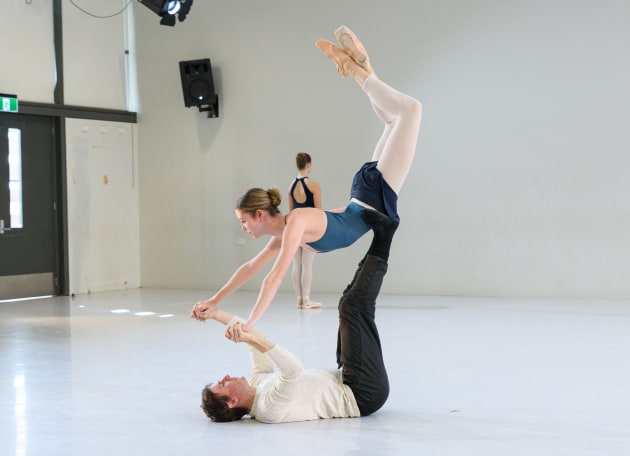French-born choreographer Claire Voss has never been one to take the obvious path. With more than two decades of international experience with companies such as Dortmund Ballet, Zurich Ballet, Finnish National Ballet and West Australian Ballet, she has carved out a career that straddles both the elegance of classical ballet and the raw urgency of contemporary themes. Her newest work, Signal-30, is a neo-classical ballet that refuses to stay silent, tackling one of the most pressing issues of our time: water scarcity.
Voss sees ballet not just as spectacle, but as a language with the power to communicate ideas that matter. “I believe ballet is still an underused art form when it comes to speaking about contemporary and urgent issues. If it avoids those conversations, ballet risks becoming less relevant in today’s world. My aim with Signal-30 is to show that ballet can stay vital and thrive — because it has a uniquely poetic and non-confrontational way of delivering powerful messages that resonate deeply with audiences.”
The work began with five WAAPA postgraduate dancers through the Blink program in May, where the first seven minutes of choreography took shape. A short excerpt was performed at the Royal Academy of Dance Australia's WA Festival of Dance Gala in June, where it drew warm feedback and signalled the potency of its theme. The second development, held in July as an independent project supported with in-kind studio space from WAAPA, built on this foundation. Thanks to community donations, it provided four WA-based dancers with paid professional experience and gave four Perth ballet students valuable professional development opportunities.
“It’s vital to see more ballet development projects like Signal-30 across Australia, because there are so few paid opportunities for young ballet graduates,” Voss explains. “Too often, talented dancers stop performing altogether simply because there is no pathway forward once they leave school. Today, when applying to companies overseas, dancers are expected to already have at least one professional credit — but how can Australian graduates gain that experience if there are only a handful of spots available in the three major ballet companies here? For me, it’s really important to create these opportunities — projects that keep young dancers dancing, growing, and being seen.”
The next phase will focus on design. Set and costume designer Megan Parker will join the team to shape the visual world of the piece, while Voss creates a new Mud pas de deux — an imagined future where water has vanished and humanity is left only with mud. This section asks what becomes of us when life’s most essential element is gone. Voss intends to work with a First Nations cultural advisor to ensure authenticity and respect as the work develops. By the end of this stage, she aims to have a full set and costumes in place, along with sufficient material to begin applying for larger grants and presenting to regional theatres. These presentations, she hopes, will lay the groundwork for a final development phase, regional and national touring, and perhaps, in time, international touring.
Voss has always been interested in what ballet can say about the world beyond the stage. Earlier works such as Simplicity for West Australian Ballet and Echoes of Tomorrow for Ballet Collective Australia showed her determination to create relevance within the classical form. With Signal-30 she pushes that ambition further, proving that ballet is more than a museum piece. It can be urgent. It can be contemporary. And it can be political.
The ballet is still in development, but already it carries the promise of something rare: a work that is both exquisitely crafted and unafraid to engage with the world it inhabits. Signal-30 invites audiences to reflect on scarcity, fragility and resilience, and to see ballet as a vessel not only for beauty but for consequence. Those wishing to follow its journey can do so via Voss’s Instagram (@claire_voss_choreographer), where she shares updates and news as the project evolves.




